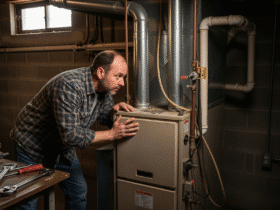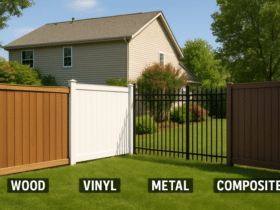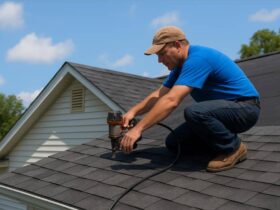Table of Contents
- Why Roof Maintenance Matters
- Most Common Warning Signs of Roof Trouble
- How Weather Can Affect Your Roof
- DIY vs. Professional Roof Inspection
- Potential Costs of Delaying Repairs
- Roof Safety Tips for Homeowners
- Industry Best Practices for Roof Care
- Resources for Homeowners
Why Roof Maintenance Matters
Paying close attention to roof maintenance is one of the most vital responsibilities for any homeowner. A neglected roof can quickly transition from a minor nuisance to a significant problem, especially when bad weather strikes or unnoticed leaks develop. Research shows that regular roof care has a measurable impact: it can extend a roof’s lifespan by up to 50% and dramatically reduce the likelihood of urgent repairs or replacements. Energy efficiency also improves when a roof is in good condition because heat and cool air stay where they belong.
For example, small cracks or lost shingles may not seem like a big deal at first. However, these minor issues can lead to insulation problems and water infiltration. Seeking advice from Raleigh roofing experts or local professionals can help detect subtle vulnerabilities that homeowners might overlook. Scheduled checkups, combined with a general awareness of your roof’s condition, help safeguard your investment, provide peace of mind, and keep unexpected repair costs at bay.
Most Common Warning Signs of Roof Trouble
Recognizing early warning signs can be the difference between a quick, affordable fix and a much larger, costlier headache. A proactive approach begins with understanding what to look for, both on the outside and inside of your home. For starters, always inspect for missing or damaged shingles—these can allow water to seep underneath, compromising the underlayment and even the supporting structure.
- Missing or damaged shingles: After storms or strong winds, it’s common to lose shingles, which exposes sensitive areas to moisture and sun damage.
- Granule loss: If you spot black or colored granules accumulating in gutters or downspouts, your shingles might deteriorate due to age or poor installation. Granules are your roof’s first line of defense.
- Interior stains or mold: Brown or yellow ceiling stains, peeling paint, or attic mold growth indicate moisture entering from above, likely through the roof.
- Sagging rooflines: Any noticeable dips, bends, or uneven sections in your roof could be an urgent sign. Structural wood may be rotting, and even a gentle sag can compromise its integrity.
- Daylight visible in the attic: If you venture into your attic during the day and see sunlight filtering through, it means that some gaps or cracks need to be sealed to prevent further issues.
Regular visual checks—especially after extreme weather—enable homeowners to catch these issues at their earliest stage. If multiple warning signs appear, it’s time to consider a comprehensive inspection right away.
How Weather Can Affect Your Roof
Weather remains one of the biggest threats to roof durability, regardless of the region or climate. From the sweltering heat of the southern states to the icy storms in northern areas, roofs are constantly exposed to environmental extremes that can accelerate wear and tear. High winds, for example, are particularly destructive; they can lift shingles, dislodge flashing, or even tear off entire sections of roofing in a matter of minutes. When wind gusts infiltrate under roofing materials, they create uplift pressure that weakens the roof’s structural integrity over time. In coastal or tornado-prone regions, this kind of damage is not just possible—it’s expected.
Rain and hail also pose serious threats. Repeated bouts of heavy rainfall can saturate roofing materials, especially if drainage systems are clogged or compromised, leading to water pooling and eventual leakage. Hailstones, even those as small as marble, can leave dents, bruises, or cracks on shingles, especially asphalt or wooden types. Over time, these imperfections can compromise the protective granules on shingles, making them less effective at shielding the roof from UV rays and moisture. For homes located in hurricane zones, the combination of wind-driven rain and flying debris can lead to both impact damage and water intrusion in just one storm.
Other environmental stressors can be more gradual but equally damaging. Prolonged sun exposure causes roofing materials—especially asphalt shingles—to become brittle and dry, often resulting in curling edges, cracking, and a loss of waterproofing effectiveness. In colder climates, the freeze-thaw cycle presents a unique challenge. As temperatures fluctuate, water trapped in small cracks or beneath shingles can freeze and expand, causing materials to split or heave. This cycle of expansion and contraction gradually weakens the roof’s resilience, potentially leading to leaks and costly repairs.
Given these risks, proactive maintenance is essential. Homeowners are strongly encouraged to schedule professional roof inspections after any significant weather event, such as a thunderstorm, hailstorm, hurricane, or blizzard—even if the roof appears undamaged from the ground. Some types of damage, like compromised underlayment or subtle shingle fractures, may not be immediately visible but can worsen quickly if left unaddressed. Early detection and timely repairs are key to extending the life of a roof and preventing minor issues from escalating into significant structural problems.
DIY vs. Professional Roof Inspection
Homeowners are encouraged to inspect visible roof areas from the ground, especially after storms or when performing seasonal tasks such as gutter cleaning. You might spot things like branches, accumulated debris, or apparent shingle loss. However, without the proper training and equipment, subtle warning signs—such as cracked flashing or hidden leaks—can go unnoticed until it’s too late. Many roofing specialists utilize advanced technology, including drones, moisture meters, and thermal imaging cameras, to enhance their ability to detect hidden weak spots or impending failures before symptoms appear indoors.
Annual or biannual professional inspections are recommended by most industry experts, particularly if your roof is more than ten years old or if you’ve experienced severe weather. Professionals know what vulnerabilities to look for and can safely access areas that would be risky to reach on their own. This approach ensures that minor issues are identified and addressed promptly—saving homeowners from future surprises and major repair bills.
Potential Costs of Delaying Repairs
Even minor delays in fixing roof issues can quickly spiral into major expenses. Water intrusion is a leading cause of property damage, and unchecked leaks create an environment that fosters rot, black mold, and compromised structural integrity. The Consumer Reports roofing guide warns that what starts as a $200 shingle replacement could easily snowball into a $10,000 roof overhaul or even more if the supporting framework sustains damage.
Beyond the cost of repairs, homeowners may face a decline in property value, higher insurance premiums, and, in some cases, health issues related to mold exposure. Taking quick action when warning signs emerge is far less disruptive to daily life and your finances than rehabbing interior spaces affected by long-term leak damage.
Roof Safety Tips for Homeowners
Avoid walking on the roof or attempting repairs during wet, icy, or windy weather conditions. These elements significantly increase the risk of slipping or losing your footing, which can result in serious injury or even death. Even light moisture can create dangerously slick surfaces, especially on sloped or aged roofing materials. It’s always better to postpone maintenance until the weather conditions are arid and calm.
When inspecting your roof from a ladder, ensure you use a sturdy, well-maintained ladder placed on level, stable ground. Position it at a safe angle—about one foot out for every four feet of height—and always secure it if possible. Wear closed-toed shoes with slip-resistant soles to ensure maximum grip. Avoid sandals, flip-flops, or any footwear that lacks traction, as they can lead to loss of balance.
Safety is paramount, and one of the most crucial precautions is never to work alone. Always have another person nearby who can hold the ladder, pass tools, or call for help in case of an emergency. A second set of eyes can also help spot hazards you might miss while focused on your task.
If your roof has a steep pitch, visible signs of wear, or you suspect there may be structural damage—such as soft spots, sagging, or cracking—do not attempt to assess or repair it yourself. These conditions can make a roof especially unstable, and navigating them without professional training can be extremely dangerous. In these situations, it’s wise to hire a licensed roofing contractor who has the experience, tools, and safety equipment needed to handle the job correctly.
Falls from roofs or ladders remain one of the most common causes of household injuries, many of which are preventable with the proper precautions. That’s why it’s critical to respect your limits and prioritize your well-being over saving time or money. If the task ever seems too complex or unsafe, don’t hesitate to call in a professional for an inspection or repair. Your safety should always come first.
Industry Best Practices for Roof Care
Industry leaders universally agree that preventive maintenance is the best investment for your home. Clearing leaves and debris from gutters prevent clogs that can trap water against your roof and siding. Inspecting flashing—those thin pieces of metal installed around roof edges, vents, and chimneys—ensures no moisture sneaks in. Logging all repairs, product warranties, and contractor visits in a dedicated folder or app provides valuable documentation, mainly if you sell your home or file insurance claims.
Scheduling a full inspection every spring and fall helps identify weather-related damage before it becomes a significant issue. Maintaining adequate attic ventilation also prevents heat and moisture buildup, ultimately reducing energy costs and extending the lifespan of the roofing materials.









